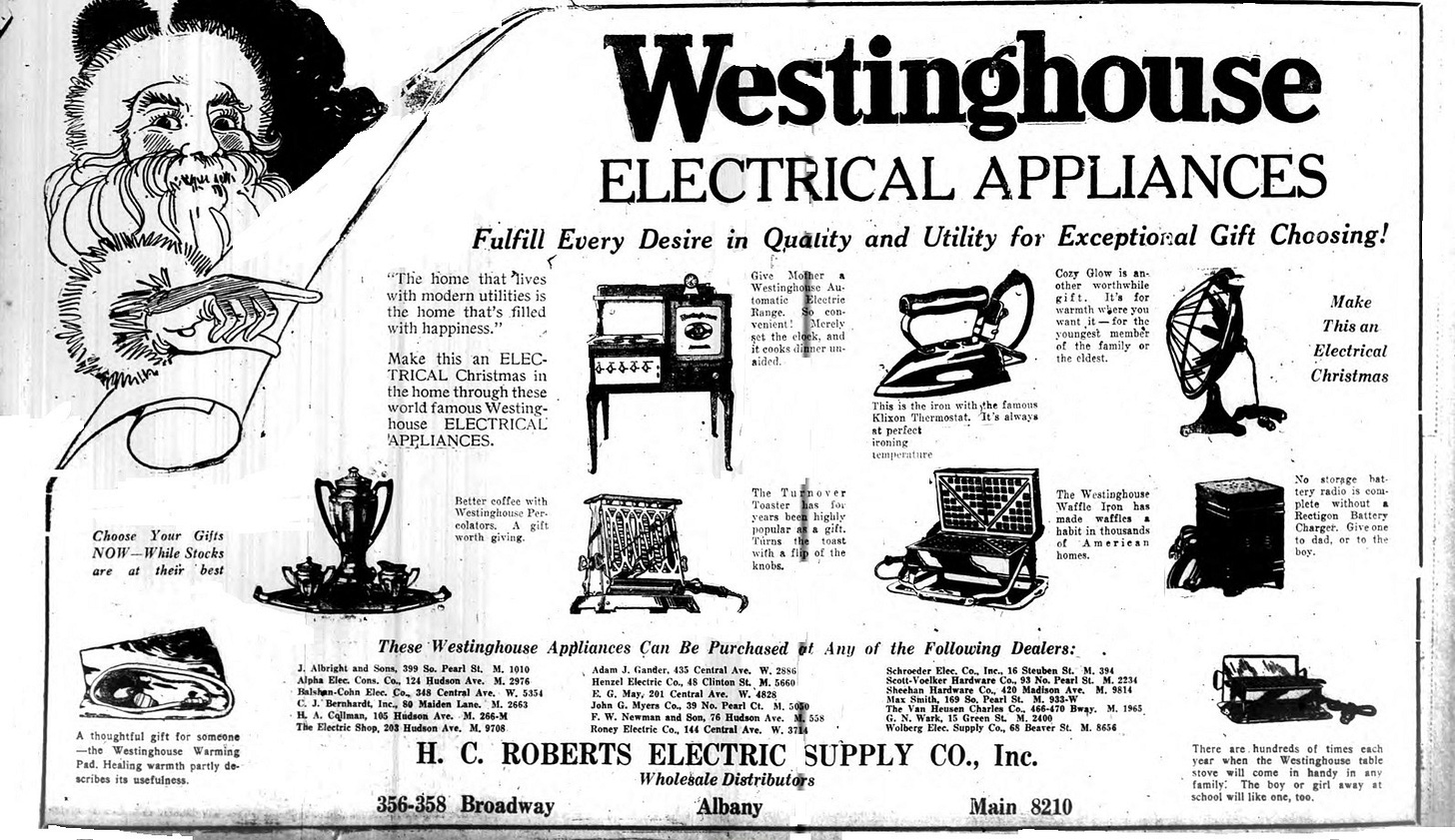Inverted Priorities
On renewables and the unspoken risk of total grid failure.
“Let our advance worrying become advance thinking and planning.” – Winston Churchill
After the First World War, electric utility firms in the US were facing a problem. Having spooled up significant generating capacity in support of the war effort, they were left with far more than the peacetime economy demanded. With barely one-third of US households connected to the grid at the beginning of the 1920s, the industry embarked on a nationwide, coordinated campaign to convince Americans that electricity was intrinsically linked to prosperity and progress. In their efforts, virtues were amplified, challenges were minimized, and innumerable marketing channels were leveraged with great effect. In his excellent article in the journal Argumentation, “Selling the ‘Electrical Idea’: The Campaign to Electrify America in the 1920s,” Andrew Feldman writes:
“Selling the ‘electrical idea’ meant extolling the safety, comfort, convenience and efficiency of electrical power and equipment. It meant daily reminders to Americans that electricity powered the modern infrastructure, bringing light, heat, power, and communications into the home and workplace. Publicity materials cast in that vein linked electricity with material abundance, national prosperity, and technological progress…
Similar themes found their way into the nation's universities, colleges, and schools. Not only were the schools and colleges seen as an effective means of introducing future ratepayers and appliance consumers to the benefits of electrical power and equipment, but also as a vehicle by which to ‘fix the truth about utilities in the young person's mind before incorrect notion's become fixed there.’”

These efforts were smashingly successful in catalyzing new demand, even if some of the tactics used—conflicts of interest and purchased influence abound—were ethically dubious. Today’s Western economies have come to depend on uninterrupted access to electricity so thoroughly that the prospect of losing power for just a few days would be catastrophic, especially in crowded urban areas. In such cities, a prolonged loss of electricity for weeks or more would rapidly break social order, and one shudders to ponder the carnage that would swiftly follow.
The progressive environmental left’s attempts to completely overhaul the production of electricity have similarly necessitated an aggressive public relations campaign, and the success of its shrewdness has been staggering. When it comes to renewable energy sources such as wind and solar, benefits are exclusively covered and grossly overstated, while challenges are hidden by a powerful cloak of propaganda. “Green, clean, and cheap” are repeated ad nauseam throughout our educational, informational, and cultural outlets regardless of the underlying truth of the matter.
The potentially disastrous consequences of these mass manipulation efforts are beginning to materialize. Beyond the well-known issues of intermittency and cost inflation, the proliferation of wind and solar is metastasizing a serious and rarely discussed risk that will eventually be borne by all: The presence of renewables makes our grids far less resilient and far more susceptible to wide-scale blackouts. The trillions of dollars of public money already thrown at this effort provide no protection.
Consider two related near-misses that have occurred in West Texas in recent years. During the late morning hours of May 9, 2021, a routine fault occurred at a traditional power plant near Odessa, Texas. The event caused voltages and frequencies in the local area to dip temporarily. This disruption was, as expected, easily handled by the other traditional plants connected to the grid. The same cannot be said for the connected renewable energy projects, and a total of 1,112 MW of solar and 36 MW of wind electricity were knocked offline.
A little more than a year later on June 4, 2022, a similar but much more serious incident unfolded in the same area, the consequences of which were felt across much of the state. A fault at a power plant caused a cascading series of failures at solar and wind installations in the region, which then triggered a traditional generation facility hundreds of miles away to go offline as well. All told, “the normally cleared single-line-to-ground fault resulted in a total loss of 2,555 MW of generation,” nearly eclipsing the entire responsive reserve service available at the time of the disturbance.
As the penetration of renewable energy grows around the world, grid operators are wringing their hands over the prospect of uncontrolled power losses leading to truly catastrophic events. Although you won’t read about them often in traditional media outlets, numerous similar events across the US have been cataloged by The North American Electric Reliability Corporation (NERC), and the organization has flagged concern over potential extended periods of total power loss at the grid level.
How has the forced introduction of renewable power sources increased grid vulnerability? What, if anything, can be done about it, and will such remediations be implemented in time to avoid disaster? Let’s flip on the lights while they still work and learn more.


